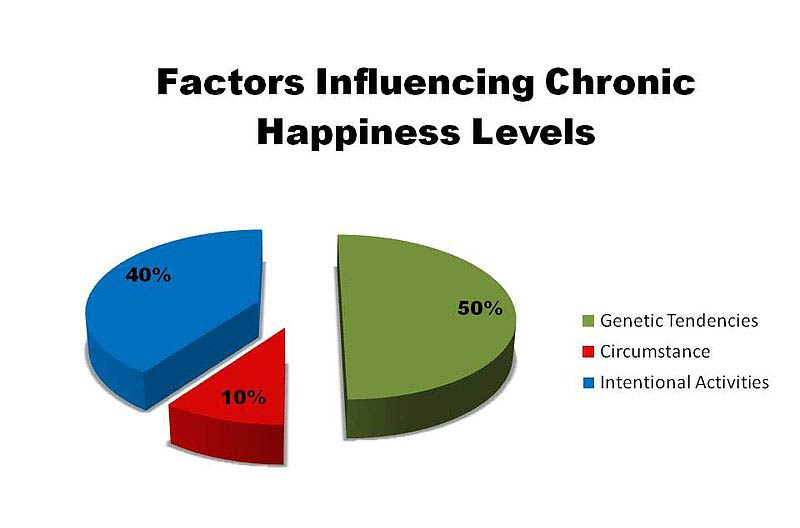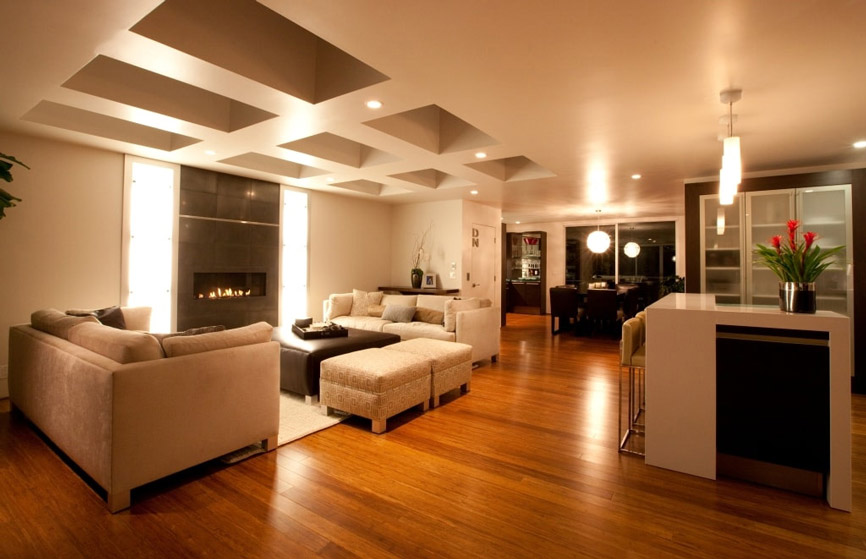While the process of choosing the right floor alone probably isn’t going to elevate you into some monk-like realm of enlightenment, it can certainly be a positive step towards a healthier and happier lifestyle. In fact, numerous scientific studies have shown that aspects of green living can make a positive impact on our lives.

“Life, liberty, and the pursuit of happiness” are enshrined in the Declaration of Independence. Of course, the meaning of the word “happiness” in this context is often the subject of debate. Back in 1776, its meaning was perhaps a little different from what it is today. But, for now, let’s agree that happiness includes feeling good about ourselves and the world we live in, and living a fruitful, long life. Though, perhaps its meaning is not as changeable as we might think. Back in 350 BC, Aristotle equated happiness with being well and doing well; we can’t disagree with that. And of course, Bob Marley had his own take on happiness.
Buildings, health, and happiness
It’s only human to want to feel healthier, happier, and generally more efficient in our work and our private lives. Running, working out, and simply keeping fit will help us live longer and more productive lives. But according to the experts, we still don’t do enough of it. Who knew that the buildings we live and work in do make a huge difference, as well as how much we take care of the environment?
What is the scientific evidence?
There have been numerous scientific studies on the relationship between health, happiness, and the environment. While much of this centers on the nature of well-being, we can’t control all aspects of our well-being. Fifty percent comes down to our temperament and personality, and ten percent is determined by our income, health, and where we live. But that leaves a huge forty percent that we can control. Check out the pie chart below.

Positive psychology
Positive psychology is the science concerning what makes life most worth living. Unlike traditional psychology, which addresses the negative aspects of life, positive psychology focuses on life’s positive aspects. In a nutshell, the theory proposes three paths to happiness. These are:
- A pleasant life: enjoying life and having positive feelings, relationships, hobbies, and interests
- A good life: being thoroughly engaged and immersed in what we are doing. When our strengths are compatible with our activities, we are said to experience “flow”. In other words, we’re “in the zone”.
- A meaningful life: achieving a positive sense of well-being and purpose by contributing or giving back to nature and society
So how does going green make me happy?
Green living means different things to different people, but essentially, it’s a lifestyle intended to reduce both your own (and society’s) negative impact on the planet. For a detailed account of this, please see our blog, Green Living: Creating A Cozy, Eco-Friendly Home. Simply taking a greener approach to your home can have a huge impact. These are just some of the benefits you’ll enjoy:
Better your physical health
In the US, around 24 million people suffer from asthma, and six million of them are children. Not all asthma attacks are the result of allergies, but most of them are, around 60%. The most common allergens in the home are dust mites, pollen, and pet dander, which is composed of tiny flecks of skin shed by your pet. Given that 27% of US homes have cats and 32% have dogs, there are a lot of allergens floating around. Many allergens come from dust mites that hide and breed in your carpet.

This nasty looking guy is a house dust mite. Just eight-thousandths of an inch long and translucent, dust mites are impossible to see with the naked eye. They feed off skin flakes and produce a wide range of powerful allergens. If you have wall-to-wall carpet in your home and you have a pet, then that is a double whammy. Replacing that carpet with sustainable hypoallergenic floorings, such as eucalyptus or bamboo flooring, will have an immediate effect on greatly reducing the allergens in your home. It could potentially also have a massively positive impact on your health, well-being, and, of course, happiness.
Improve your mood
Taking control of your life has a positive impact on your mood, and deciding to live a greener lifestyle is an excellent example of taking control. While much of this revolves around your life at home, many other aspects of greener living also improve mood. Getting closer to nature, using sustainable public transport, recycling, living off-grid; are all activities that can make you feel better about yourself and the important people in your life.
Add meaning to your life
A meaningful life is one of the keys to a happy life. According to psychology professor, Michael Schmitt from the Simon Fraser University and his colleagues, eco-friendly behaviors that involve interacting with other people increase people’s satisfaction level about their lives. There are several ways in which we can do this. Some examples are:
- Leaving the car at home
- Conserving energy
- Buying locally grown produce
- Planting trees
- Using products produced from sustainable sources
Introduce wonders in the workplace
When you are at work, do you frequently feel a mid-afternoon slump when your concentration declines and your productivity hits a low? There are many potential reasons for this. Perhaps we are experiencing a drop in our blood sugar level because we ate too many carbs at lunchtime, are a little dehydrated. have been sitting around without exercise for too long, or it could simply be because our work environments are unhealthy. Studies show that greening the workplace reduces cost, improves people’s productivity, reduces absenteeism, and increases motivation. Simple measures such as improved ventilation, more natural light, indoor plants to freshen the air, and generally taking a more sustainable approach to work all make a difference.
How do the different types of floors affect health and happiness?
We have already mentioned allergens such as dust mites that love to live in our carpets and soft furnishings. While regular vacuuming and periodic deep carpet cleaning can help, why not replace your carpets entirely with a sustainable flooring material such as bamboo or eucalyptus? While carpets feel soft underfoot, provide insulation, are easy to install, and are available in a wide variety of textures, styles, and patterns, they are difficult to keep really clean and, in addition to dust mites, harbor many other pathogens and odors.
VOCs
An additional problem with carpets is VOCs or volatile organic compounds. These are a significant health hazard in the home, particularly formaldehyde, organochlorides, and phenols. These occur in carpets and underlays and are emitted by carpets especially when they are new. That nice new carpet smell you get immediately after installation could be damaging your health.
Damp carpets
Should your carpets get wet, they are difficult to thoroughly dry. Damp deep pile carpets are excellent places for harboring mold and fungi which can trigger a wide range of allergic and toxic reactions.
Hypoallergenic flooring

Bamboo and eucalyptus floors avoid all those issues. They don’t trap odors and are the perfect solution for anyone subject to asthma or any other respiratory problem. If you have a pet that could ever make a mess on your bamboo floor, then it’s easy to clean up and disinfect with any proprietary cleaner; this is certainly not the case on a carpet. We call bamboo, eucalyptus, and hardwood flooring hypoallergenic as these materials are not associated with producing or harboring allergens. We need to exercise a little caution here as there is no formal standard, it just means they are far less likely to trigger an allergic reaction. But there are no nooks and crannies for allergens, dust, and mites to lurk, and cleaning bamboo and eucalyptus flooring is so easy. These floors are highly unlikely to be associated with any kind of allergic response.
Kind to the environment

Both bamboo and eucalyptus are highly sustainable. They grow rapidly and mature quickly causing minimal disruption to the environment. When you choose to install floors made of either of these, you are reducing your carbon footprint and doing your bit to help create a greener, more sustainable planet. As we indicated above, this checks several of the boxes we associate with improving well-being.
The well-being of our children and their children’s children
If we really care about future generations, we must bequeath them a planet that is better than the one we inhabit currently. We can contribute to this by making greener decisions that make a positive impact and increase sustainability. Even simple decisions, such as making greener choices regarding our floors, can bring about huge improvements to both our health and our happiness.
Finally
Despite happiness being a major concern of humans through the centuries, the science of happiness is still a relatively new subject, and psychologists and scientists are still searching for common ground. Do you intend to make a greener decision shortly? Are you considering installing sustainable flooring? How will it impact your life? Let us know below; we look forward to your comments.
